San Juan Cruise Port Guide Info
San Juan is among the top tourist destinations in the Caribbean, and one of the largest home-based cruise ports in the region with a total capacity to accommodate 9 cruise ships at once. Each year more than 20 cruise lines bring millions of tourists to the city. Many of the major cruise lines often use San Juan as a starting point (home port) for Eastern and Southern Caribbean cruises including Carnival Cruise Line, Royal Caribbean, Princess Cruises and Disney Cruise Line.
Cruise ships arriving in San Juan dock at the Old San Juan Piers & Terminals or at the Pan American Pier.
Old San Juan Piers, which can accommodate up to 7 large cruise ships at once, is more convenient for the visitors since it’s within walking distance from the Old San Juan and. Pan American Pier is located 1-mile southeast, across the San Antonio Canal on Isla Grande. Most often this pier is used as a homeport for cruises since is located close to the Isla Grande Airport. The Pan American Pier can accommodate two mega-ships including the world's largest cruise ships such as the Oasis of the Seas.
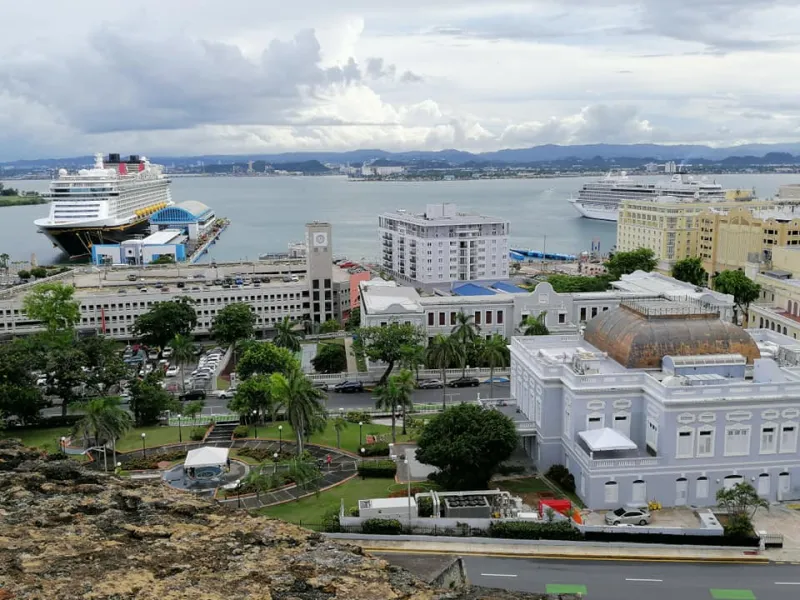
Founded in 1521 by Juan Ponce de Leon, San Juan is the capital of Puerto Rico. Apart from scenic waterfronts, centuries-old forts, various museums, 500 years old cathedrals, charming plazas, excellent restaurants and shopping, the streets of Old San Juan are windows to the past. There are more than 400 beautifully restored 16th and 17th-century Spanish colonial buildings with cobblestone streets, which were originally used as ballast for the trade ships arriving from Spain.
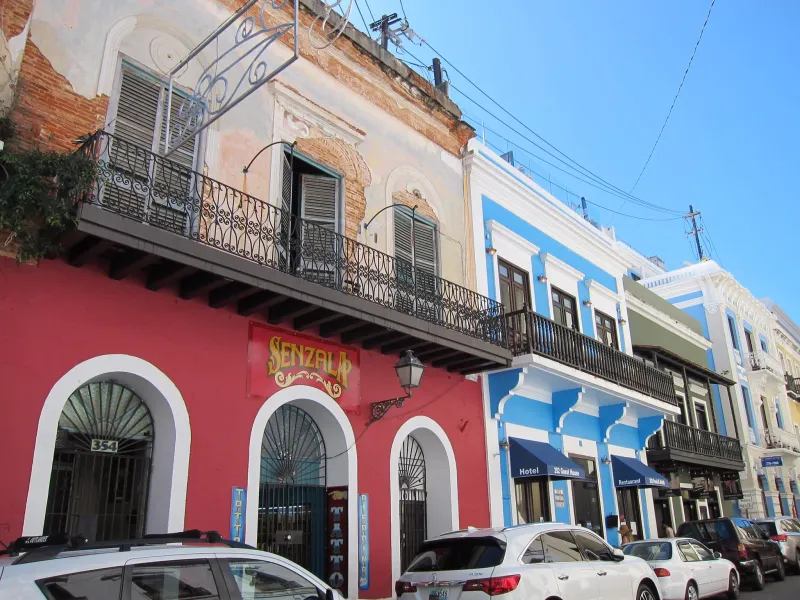
This whole area can be explored on foot but some parts are narrow & steep streets, therefore it’s a good idea to bring comfortable shoes. Besides, it might be far length of walking at some points for someone, however, there are free trolley services that make frequent stops.
Capilla del Cristo Chapel

A small chapel built in 1753, inside the chapel are the beautiful Campeche paintings and a silver altar which was dedicated to the Christ of Miracles. Many faithful visitors have come here to pray for cures. The iron gate is usually closed but you can view inside the chapel through the gate (open only on Saturday and Sunday 12pm-6pm).
There are many versions to the legend that led to the construction of the chapel. According to one during the San Juan Bautista celebrations in 1753, Baltazar Montanez on horseback raced down Calle Cristo and lost control of his horse and plunged over the steep cliff at the end of the road, whether he lived and the chapel was built to commemorate the miracle, or whether he died and the chapel was built to block off the street to prevent such an accident. Maybe we’ll never know the true story behind this legendary chapel.
Right next to the chapel is Parque de las Palomas (Pigeon Park), the perfect spot to enjoy a magnificent view of the harbor, city and mountains.
Plaza of Religious Procession
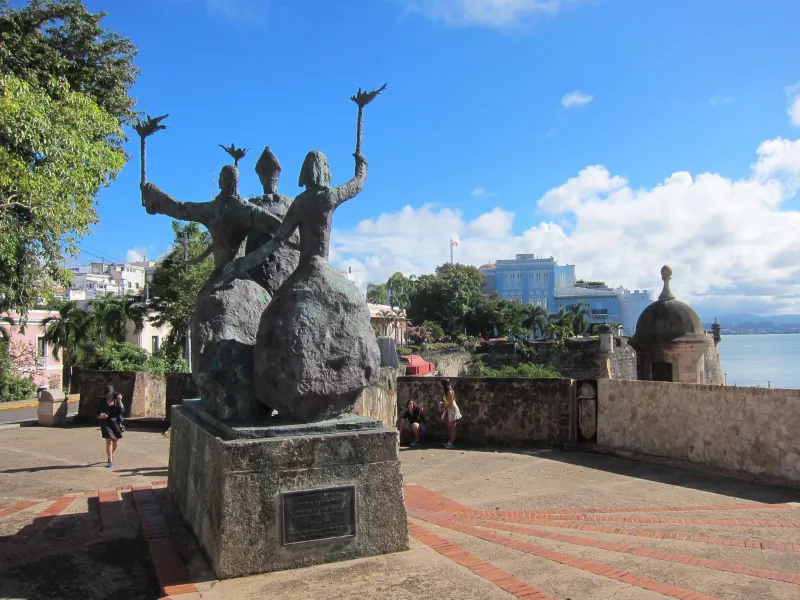
Plazuela de la Rogativa (Plaza of Religious Procession) or Rogativa Plaza was built in 1971, to commemorate an event that took place on this site in 1797. Featuring a bronze sculpture overlooking the Bay of San Juan, according to legend; the bishop and the women of the town were carrying torches, singing and ringing bells as they walked through the streets and the British troops mistook them for large troop and decided not to attack San Juan and eventually sailed away.
Plaza de Armas features four statues representing the four seasons; are over 100 years old. It was planned as the main city square and has been a social meeting place for generations. City Hall can be seen in the background.
Raices is a dramatic fountain and bronze sculpture located at Paseo de la Princesa. The sculpture represents the island heritage and cultural roots. This is an excellent spot to watch the sunset in Old San Juan.
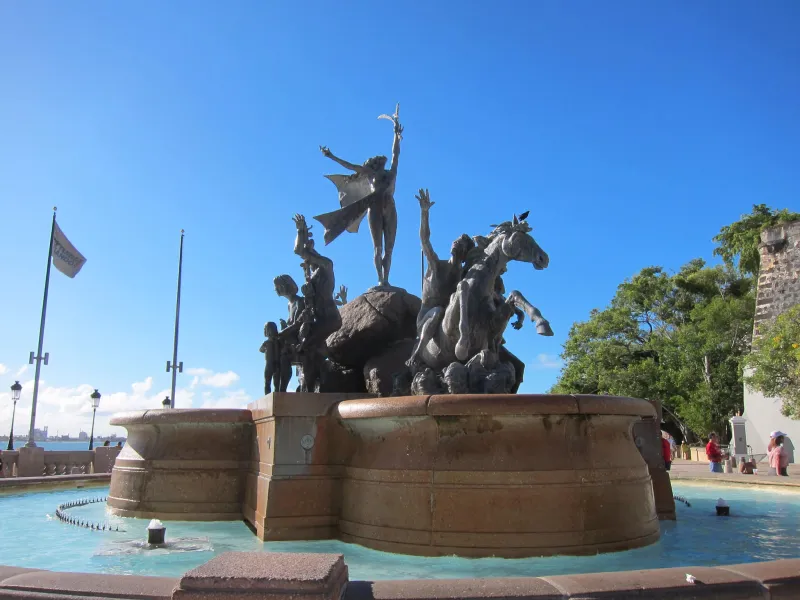
La Fortaleza
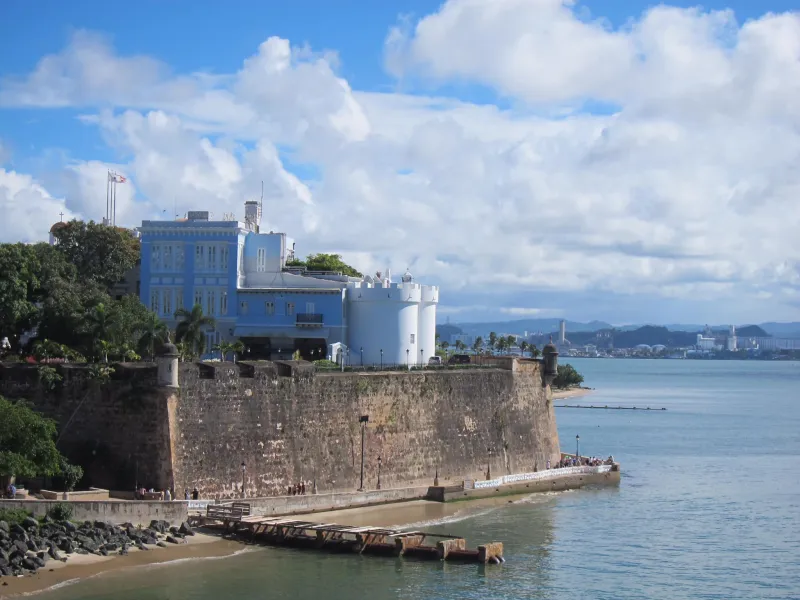
La Fortaleza, was constructed as a defense against attacks and later became the official Governor‘s Residence. It has been home of 170 governors of Puerto Rico and is still the official residence of the current governor.
Close by is The Puerta de San Juan (San Juan Gate) built in 1700. The heavy wooden door in the wall which at this point is 6 meters thick and 12 meters tall. Originally, there were 6 gates surrounding the city, unfortunately, this is the last remaining gate.
The Cathedral de San Juan, construction began in 1521, the second oldest cathedral in the Americas. The body of the great Spanish explorer & the island’s first governor Ponce de Leon is laid here in a marble tomb since 1913.
EI Morro
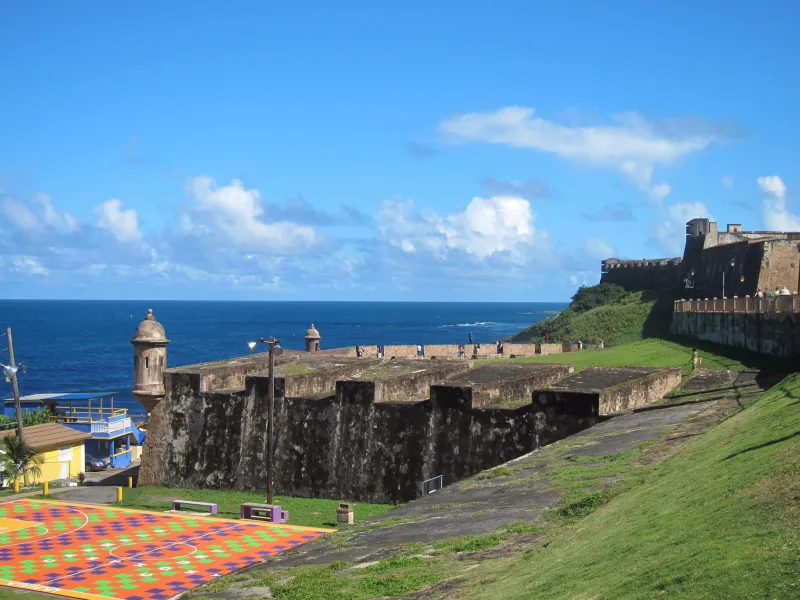
San Felipe del Morro is commonly known as EI Morro, construction began in 1539 and completed in 1589. Most of the walls were added later in 1760-1780, as tall as 42.5 meters and as thick as 5.5 meters. Because Old San Juan was wrapped by fortresses and walls, so it has the nickname “La Ciudad Amurrallada” meaning the walled city. Therefore, don’t be surprised to see the sentry boxes around the city.
These small circular sentry boxes are called “garitas”, which are unique to Puerto Rican forts and they are the national symbol.
